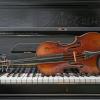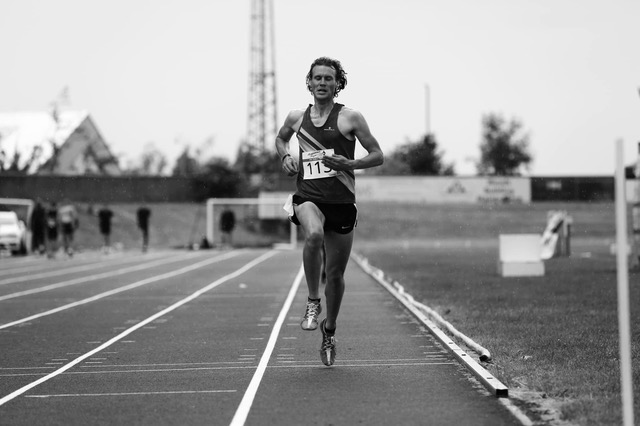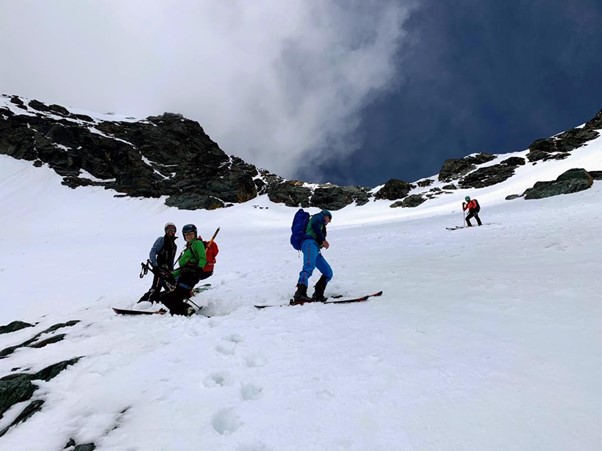
We meet four IIASA scientists and take a look at the extraordinary things they do when they leave their computers behind for the day.
Researchers at IIASA are working hard to identify options to enhance sustainability and resilience in social and natural systems with the aim of guiding policymakers around the world towards positive change. Apart from excelling in their professional lives, many scientists also push themselves to succeed in other endeavors and, perhaps surprisingly, find that research is not an isolated skill, and that the way they dance, run, climb mountains, or arrange musical notes influences the way they do research.
Dancing as a way of presenting yourself
IIASA Advancing Systems Analysis Program Director, Elena Rovenskaya, was a competitive ballroom dancer in Russia prior to joining IIASA. Although she started dancing as a child, it was during her time at university that the hobby became a passion, driving her to work her way up the competitive ladder of the Russian ballroom dancing scene.
After seven years of juggling her career as a researcher with that of a dancer, she needed to make the difficult choice between her two passions, as continuing her dancing career would have required her to give up everything else in her life. Even though she ended up choosing science and has stopped dancing professionally for over 15 years now, her past still influences her work as a researcher to this day.
“Scientists have to speak in different settings and give presentations, which is similar to a dancer’s performance on stage. It doesn’t matter what mood you are in that day; you have to learn to work with your body and your emotions,” she explains. “Through dancing, you learn how to control even the smallest muscles in your body, which can be really helpful.”
Having trained for two to three hours almost every day for a large part of her life, Rovenskaya also became comfortable with looking at her reflection, which is a challenge for many.
“The pandemic has led to us having to look at ourselves on Zoom a lot, which is uncomfortable for many of people — some even switch their own video view off,” she says. “For dancers, this is normal. Through the hours spent training in front of a mirror, we get comfortable with our own image and learn how to present ourselves better.”
Running for ideas
Some people drive to work, while others take to greener options, like using public transport or riding bikes.
Chris Smith, an IIASA ̶ Natural Environment Research Council collaborative research fellow from the UK, takes a different approach: he runs to work almost every day.
“It’s 18 kilometers, but sometimes I take the metro some of the way and then that is only 10 kilometers, or if I’m feeling really lazy, I’ll take the train to Mödling, making it only six and a half,” he notes.
Smith used to play football as a child, and while he was not particularly successful with scoring goals, he realized that he could run faster than the others. Changing ‘track’ at the age of 15, he joined his local running club and soon started competing in cross-country national events, local championships, and road races.
 © Chris Smith
© Chris Smith
While he is currently away from his usual competition scene, last year he entered and won a race in Vienna’s Prater Park. He found that his daily get-to-work routine is beneficial for his research, helping him to get new ideas or just release all the pent-up stress.
“Running certainly compliments my research,” says Smith. “Sometimes you have ideas that are not fully developed, and maybe just getting a bit of oxygen to your brain can really help that process.”
Engaging new parts of the brain with music
As well as being a researcher in the IIASA Energy, Climate, and Environment Program, Samuel Guéret is also a pianist. While his talent for music has been apparent since he was young, initially he planned to follow his parents’ advice and study Engineering in the Belgian army. At the same time, his piano teacher encouraged him to explore his musical talent, which in the end led him to enroll in the Brussels Conservatory to study Arts and Piano. As he never completely let go of the idea of studying engineering either, two years into his musical studies he decided to attend the Free University of Brussels and start a degree in Chemical Engineering.
“It was difficult to do two degrees at once, but at the same time, switching from one to the other was like opening a new window onto an empty field in the brain,” he explains. “When working on equations for hours without success, sitting down at the piano helped to open new ways of thinking and creativity.”
While music temporarily took a backseat to his research career due to the pandemic, Guéret hopes to start performing and collaborating with musicians again soon. During his time juggling two vocations, he learned that even though he had less time to practice either discipline, the efficiency of his work increased.
“It was a huge realization for me to see how adaptable the brain actually is,” he says.
Scaling mountain peaks
“The outdoors and nature always featured very strongly in my family,” says Caroline Zimm, a researcher jointly associated with the IIASA Energy, Climate, and Environment, and Population and Just Societies programs.
Zimm started hiking and ski touring at a young age. At first, she was not thrilled by the idea of having to get up the mountain herself with heavy skis instead of taking the lift, but over time she has grown to appreciate the challenge and the relative solitude that the sport provides.
 © Roland Hemetsberger
© Roland Hemetsberger
Zimm (in green) on the slopes of Großglockner
Noticing how climate change is affecting the alpine regions, Zimm is conscious of her impact.
“Even though you have an environmental footprint because of the transport and equipment the sport requires, you still have the feeling that your impact is not as big as it is with alpine skiing, as you don’t need lifts and all the associated infrastructure,” she explains.
Her most memorable experience happened in 2021 when she scaled Großglockner, the highest mountain in Austria with her skies. Her outdoor endeavors complement her work in perhaps a more subtle, but nonetheless essential manner.
“Spending time in nature while running, hiking, biking, or ski touring increases my wellbeing and gives me endorphins and vitamin D exposure, which is especially helpful after sitting in front of the computer the whole day during the week,” she says.